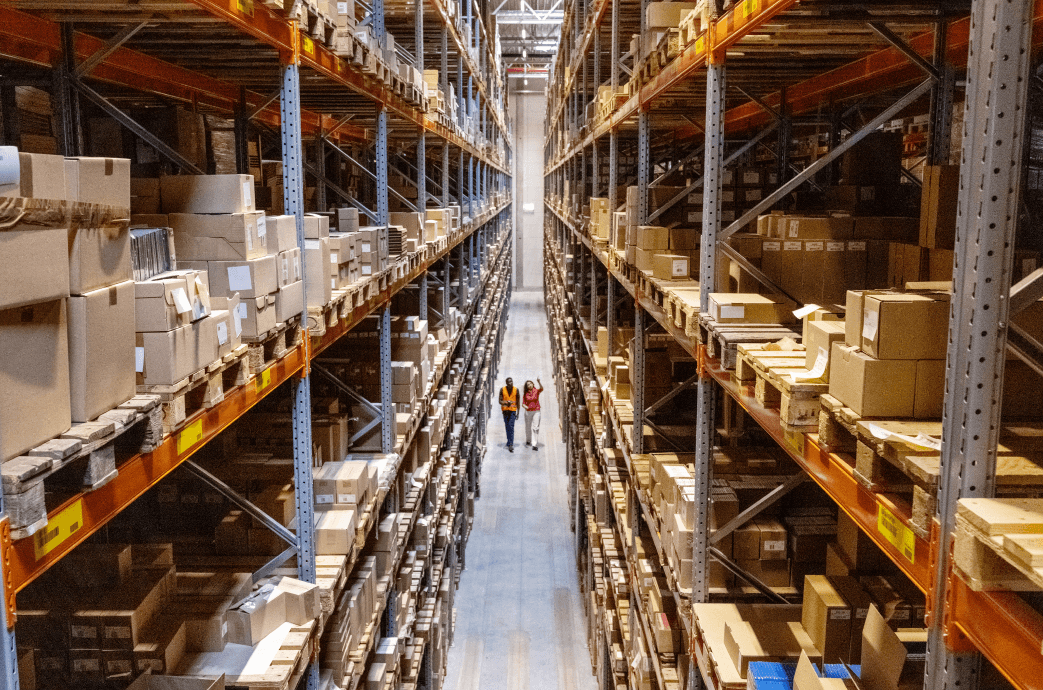.jpg?width=1000&height=667&name=DSC_8122%20(1).jpg)
As e-commerce evolves, customer expectations continue to rise. To maintain customer satisfaction, you need to meet these demands efficiently. To ensure your business maintains a well-oiled machine while juggling high volumes of orders, returns processes and ultimately keeping the end customer happy.
If your warehouse is prone to downtime, lengthy return processes, or unnecessary double handling, we have good news for you. Primepac is an industry leader in providing only the best packaging products that help to reduce wasted time and increase your profits.
In this article, we explore the full cost of downtime in a warehouse workflow, including the impact of returned products. We also explain how to calculate your annual downtime cost and share advice on how to reduce it.
The true cost of downtime
Downtime in a warehouse refers to any time when operations are temporarily delayed, slowed down, or stopped altogether. Downtime in a warehouse can be costly, not only due to the stoppage itself but also due to potential subsequent flow-on effects, such as:
- Lost sales revenue
- Overtime labour costs
- Reduced productivity
- Idle equipment costs
- Inventory holding costs
- Customer dissatisfaction
- The supply chain ripple effect
- Rush shipping costs
- Administrative costs
- Packaging replacement
The downtime annual cost equation
To calculate your annual downtime costs, you first need to add up the average number of hours per day that your warehouse experiences downtime. This should include any order processing, packaging, and deliveries that could have been prevented. When you have your total, use the following equation:
(Hours of downtime per day) x (Total cost per hour) x (Days worked per year)
.png?width=555&height=231&name=Downtime%20annual%20cost%20equation%20(1).png)
Example of the downtime annual cost equation
For example, if your pallets often require rewrapping, your downtime will add up quickly. If it takes 2.5 minutes to wrap a pallet the first time, 5 minutes to rewrap it, and you have 6 breakages per day, the equation is as follows:
(0.5) x ($450NZD*) x 240** x 52 = $54,000 downtime costs every year.
*The average cost of downtime in a small business is $450NZD per hour
**240 is the average number of working days a year
.png?width=555&height=139&name=Downtime%20annual%20cost%20equation%20(4).png)
What can be affected by downtime in the warehouse?
Downtime in a warehouse can be costly, not only in the stoppage itself but also in the subsequent flow-on effects. To understand these implications and their impact on your warehouse, continue reading.
Lost sales revenue
When the warehouse is impeded by downtime, orders cannot be processed and shipped as quickly as usual. This may lead to delays in fulfilling customer orders and can result in cancelled orders and damage to your company's reputation.
Overtime labour costs
To catch up on delayed orders, businesses often pay employees overtime to complete the replacement order quickly. Overtime wages are typically higher than regular wages, which can significantly increase labour costs and impact operational budgets and your business’s bottom line
Reduced productivity
When systems are down or processes are disrupted, employees may not be able to work as efficiently. This can result in wasted time and a lower output of processed orders.
Idle equipment costs
Downtime often means equipment is sitting idle, such as conveyor belts, packing machines, and other automated systems. While they are idle, these machines consume energy and incur maintenance costs without generating any revenue.
Inventory holding costs
With delays in processing and shipping orders, you may need to store inventory for longer periods, incurring expenses related to storage space, insurance, and potential obsolescence.
Customer dissatisfaction
When customer's orders are delayed or arrive in poor condition, they are likely to complain, leave a bad review, or stop buying from your brand altogether. Remember, it is more cost-effective to keep your existing customers happy than to constantly acquire new ones. While this cost is difficult to quantify, it will have a huge impact on your bottom line.
The supply chain ripple effect
Downtime in a warehouse can create ripples throughout the supply chain. If products are not received from suppliers or not shipped to customers on time, it can disrupt the entire supply chain, impacting relationships with suppliers and customers alike.
Rush shipping costs
To mitigate the impact of downtime, you may need to use overnight shipping or similar rush shipping methods. While these accelerated shipping options help to meet customer delivery expectations, they typically cost more than standard shipping.
Administrative costs
Managing and mitigating downtime often requires additional administrative time and resources. This may include scheduling repairs, communicating with customers about delays, and reorganising workflows.
Packaging replacement
Besides replacing or fixing a returned product, you also need to package it again for redelivery. This means you use twice as much time and packaging products as you should for one order. If the first order was damaged, it also pays to package the replacement order more carefully with protectives and more reliable wrapping methods.
How to reduce warehouse downtime with efficient packaging
Downtime can be caused by various factors, for example, technical malfunctions, equipment maintenance, shift changes, and peak season overloads. Fortunately, you can mitigate the risk of downtime and prevent unnecessary returns by selecting the right packaging products. At Primepac, we see a large factor in incurring downtime is inadequate packaging for the operation - pallet wrap that isn't engineered correctly, tape that isn't fit for purpose, and cartons that are too weak are all examples of root cause factors that can lead to significant downtime. If you are unsure of whether your packaging processes and products are fit for purpose, get in touch with an expert today
Packaging your products correctly can speed up your operations and reduce the amount of damage incurred during transit. Start by answering the following questions:
- What size carton or courier bag do you need?
- Do you need void fill or protectives to ensure the order is secure during transit?
- Which packaging tape is best for your warehouse?
Here at Primepac, our team is more than happy to help you with this process. We can even conduct a free analysis of your requirements to determine the most suitable pallet wrap for your operations. Request your free analysis by clicking below.






.png)

